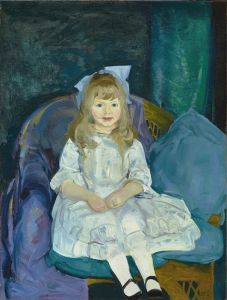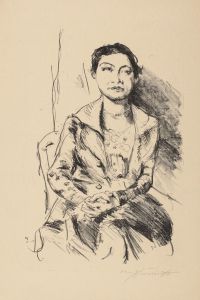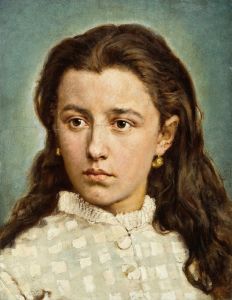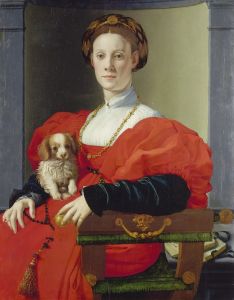
Portrait of a Woman
A hand-painted replica of Lucas Cranach the Elder’s masterpiece Portrait of a Woman, meticulously crafted by professional artists to capture the true essence of the original. Each piece is created with museum-quality canvas and rare mineral pigments, carefully painted by experienced artists with delicate brushstrokes and rich, layered colors to perfectly recreate the texture of the original artwork. Unlike machine-printed reproductions, this hand-painted version brings the painting to life, infused with the artist’s emotions and skill in every stroke. Whether for personal collection or home decoration, it instantly elevates the artistic atmosphere of any space.
"Portrait of a Woman" is a painting by Lucas Cranach the Elder, a prominent German Renaissance artist known for his portraits, religious works, and mythological scenes. Cranach was a close associate of Martin Luther and played a significant role in the visual culture of the Protestant Reformation. This particular painting is an example of his skill in portraiture, showcasing his ability to capture the individuality and elegance of his sitters.
The painting depicts a woman, whose identity remains unknown, dressed in the fashion of the early 16th century. She is portrayed with a calm and composed expression, a hallmark of Cranach's portrait style. The sitter's attire, including her headdress and jewelry, reflects the clothing and accessories typical of the period, indicating her status and wealth. Cranach's attention to detail is evident in the intricate rendering of the fabric and the delicate features of the woman's face.
Cranach's portraits are often characterized by their use of vibrant colors, smooth textures, and a focus on the sitter's individuality. In "Portrait of a Woman," the artist employs a dark background to emphasize the figure, a technique commonly used in Renaissance portraiture to draw attention to the subject. The painting also demonstrates Cranach's mastery of oil painting, a medium that allowed for subtle gradations of light and shadow.
The exact date of the painting is not definitively known, but it is generally attributed to the early 16th century, during the height of Cranach's career. The work is part of a larger body of portraits created by Cranach and his workshop, many of which were commissioned by members of the nobility and wealthy patrons.
"Portrait of a Woman" is housed in the collection of the National Gallery in London, where it is displayed alongside other works by Cranach and his contemporaries. The painting is appreciated for its historical and artistic significance, offering insight into the cultural and social context of the German Renaissance.
As with many of Cranach's works, the painting reflects the artist's ability to combine realism with an idealized aesthetic, creating a timeless representation of his subject. It remains an important example of Cranach's contribution to Renaissance art and his enduring legacy as one of the leading painters of his time.


















